I've successfully deployed a meteor app with mupx on an EC2-Ubuntu server. Now I've created an additional Websocket server inside the meteor app, which is listening to port 8080, because meteor already uses its own Websocket implementation on port 80. I tested it on my local machine and it works.
I already edited the AWS Security Groups to allow port 8080 from all addresses.
How can I forward everything from port 8080 into port 8080 in my meteor application inside the docker container? And does these settings remain, if I redeploy with mupx?
The docker configuration is handled by mupx and you can find the responsible script here: https://github.com/arunoda/meteor-up/blob/mupx/templates/linux/start.sh.
I never used docker before btw

